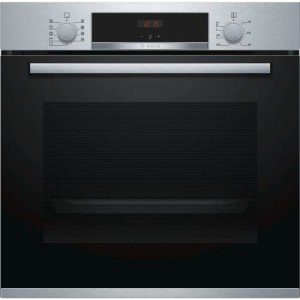The Rise of Built-In Ovens: A Seamless Approach to Modern Cooking
In modern kitchen areas, where style looks blend perfectly with performance, one appliance sticks out as a real game changer: the built-in oven. As property owners and chefs alike continue to look for ingenious solutions that boost their cooking experience, built-in ovens have actually ended up being significantly popular. This post checks out the advantages, considerations, and trends surrounding built-in ovens, highlighting why they are an essential function in modern cooking areas.
What is a Built-In Oven?
A built-in oven is a kitchen device designed to be integrated into the kitchen cabinetry of a kitchen instead of standing alone. Unlike conventional freestanding ovens, which can be moved and placed anywhere, built-in ovens been available in numerous styles and sizes to fit particularly within designated spaces. Available in single or double configurations, these ovens offer a structured look that complements modern cooking area styles.
Benefits of Built-In Ovens
1. Space-Saving Design
One of the most enticing advantages of built-in ovens is their space-saving style. By integrating the oven into cabinetry, you can maximize valuable counter and flooring area. This is especially useful in smaller sized kitchen areas, where maximizing room is important. Built-in ovens can be set up at eye level, making them more accessible and minimizing the need to flex down.
2. Aesthetic Appeal
Built-in ovens contribute to a sleek and cohesive cooking area style. Available in different finishes-- such as stainless steel, black, white, and customized kitchen cabinetry-- they can mix effortlessly into the overall design. This visual appeal enhances the cooking area's visual consistency and elevates the area, producing a modern-day and advanced atmosphere.
3. Enhanced Functionality
Numerous built-in ovens come equipped with sophisticated cooking innovations, such as convection cooking, steam ovens, and wise functions. These enhancements enable versatile cooking choices, making it easier to achieve professional-level results in your home. Smart built-in ovens can even connect to Wi-Fi, enabling users to manage the oven remotely, receive notices, and access a range of cooking programs and recipes.
4. Enhanced Ventilation
Due to the fact that built-in ovens can be integrated with kitchen area hoods and ventilation systems, they can help keep much better air quality and lower cooking smells. This is especially considerable for those who like to prepare with fragrant spices and active ingredients, as a reliable ventilation system can keep the kitchen comfy and inviting.
5. Modification Options
Built-in ovens use a large range of personalization choices to suit private cooking styles and requirements. From professional-grade appliances with several cooking modes to compact styles for smaller sized kitchen areas, property owners can select the oven that fits their particular requirements. Numerous manufacturers likewise offer customizable front panels, enabling you to match the oven's look to your cabinetry for a truly unified appearance.
Factors to consider When Choosing a Built-In Oven
While built-in ovens have many advantages, there are very important factors to consider to keep in mind before buying:
1. Rate
Built-in ovens generally feature a higher cost than their freestanding counterparts due to their design and installation requirements. It's important to aspect in both the expense of the oven and any extra expenses related to kitchen cabinetry adjustments or installation.
2. Installation Requirements
Installing a built-in oven typically needs expert help, specifically if you need to modify existing cabinetry. Ensure that you think about any expenses related to setup, consisting of labor and possible cabinetry modifications.
3. Size and Dimensions
Before acquiring a built-in oven, determine the designated area accurately to ensure a correct fit. Built-in ovens can be found in numerous sizes and setups, so choosing one that lines up with your needs and cooking area style is crucial.
4. Suggested Looking at and Usage
Consider your cooking habits and needs when selecting a built-in oven. If you frequently host large events, a double oven may be more useful. On sources , if you have a compact cooking area, a single-wall oven may be adequate.
Trends in Built-In Ovens
The cooking area device market is continually progressing, and built-in ovens are not exempt from emerging trends. Some present patterns include:

Smart Technology Integration: With the rise of smart home innovation, built-in ovens now often include connection alternatives. This allows users to keep track of cooking development and change settings via mobile apps.
Energy Efficiency: As sustainability becomes a concern, lots of manufacturers are buying energy-efficient built-in ovens that minimize energy consumption while preserving efficiency.
Multi-functional Designs: Built-in ovens now offer features such as air frying, slow cooking, and steaming, providing versatility that satisfies a large range of cooking approaches.
Conclusion
Built-in ovens undoubtedly represent a best blend of design, function, and convenience in today's kitchens. As more house owners opt for this modern-day option, the focus moves to producing a cooking space that is as visually pleasing as it is practical. Whether you are building a brand-new home or redesigning your kitchen, considering a built-in oven could elevate your culinary experience and transform your kitchen area into a stylish and functional haven. With a selection of choices offered and ongoing innovations in innovation, built-in ovens remain a standout option for both beginner cooks and culinary lovers alike.
